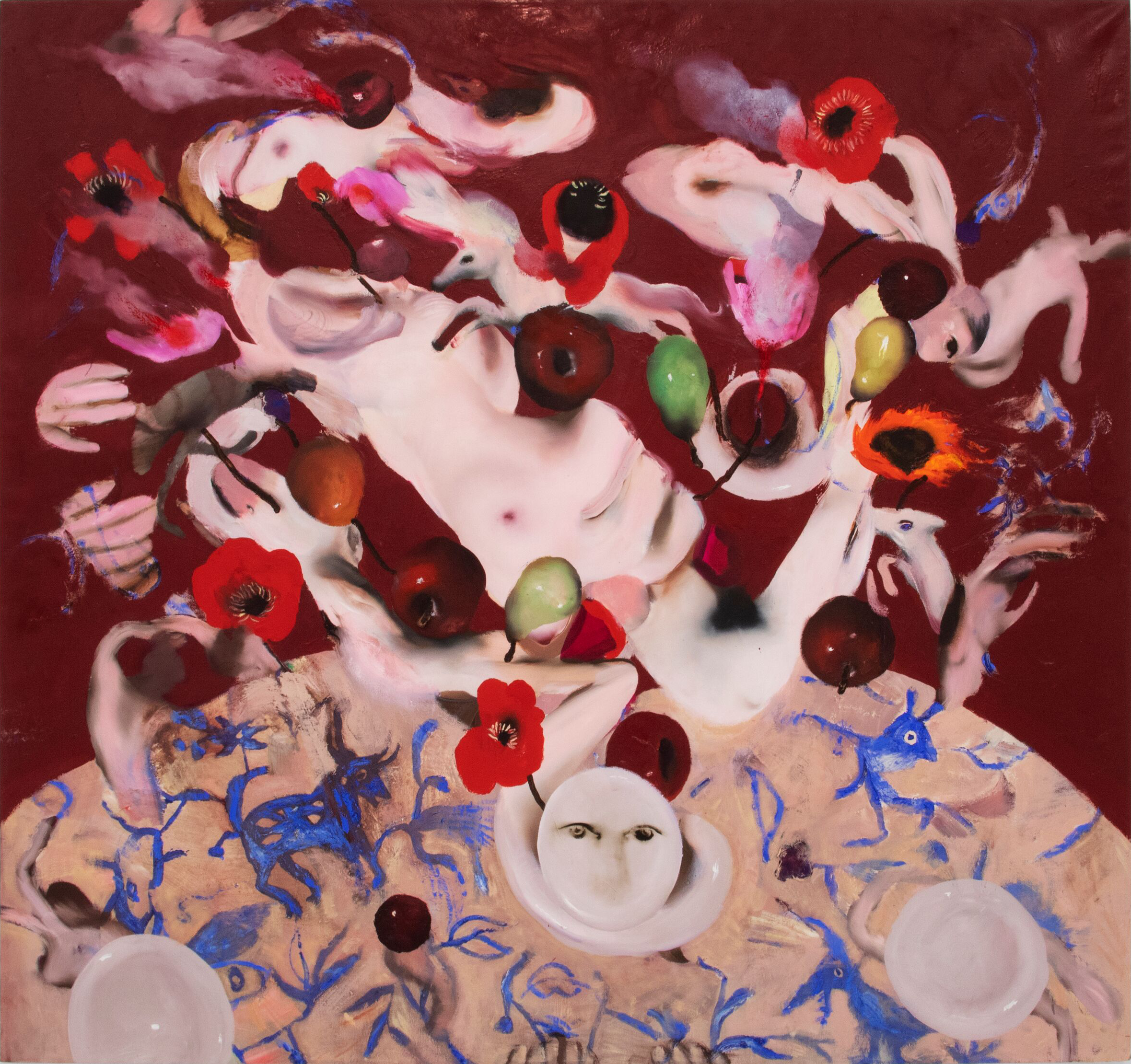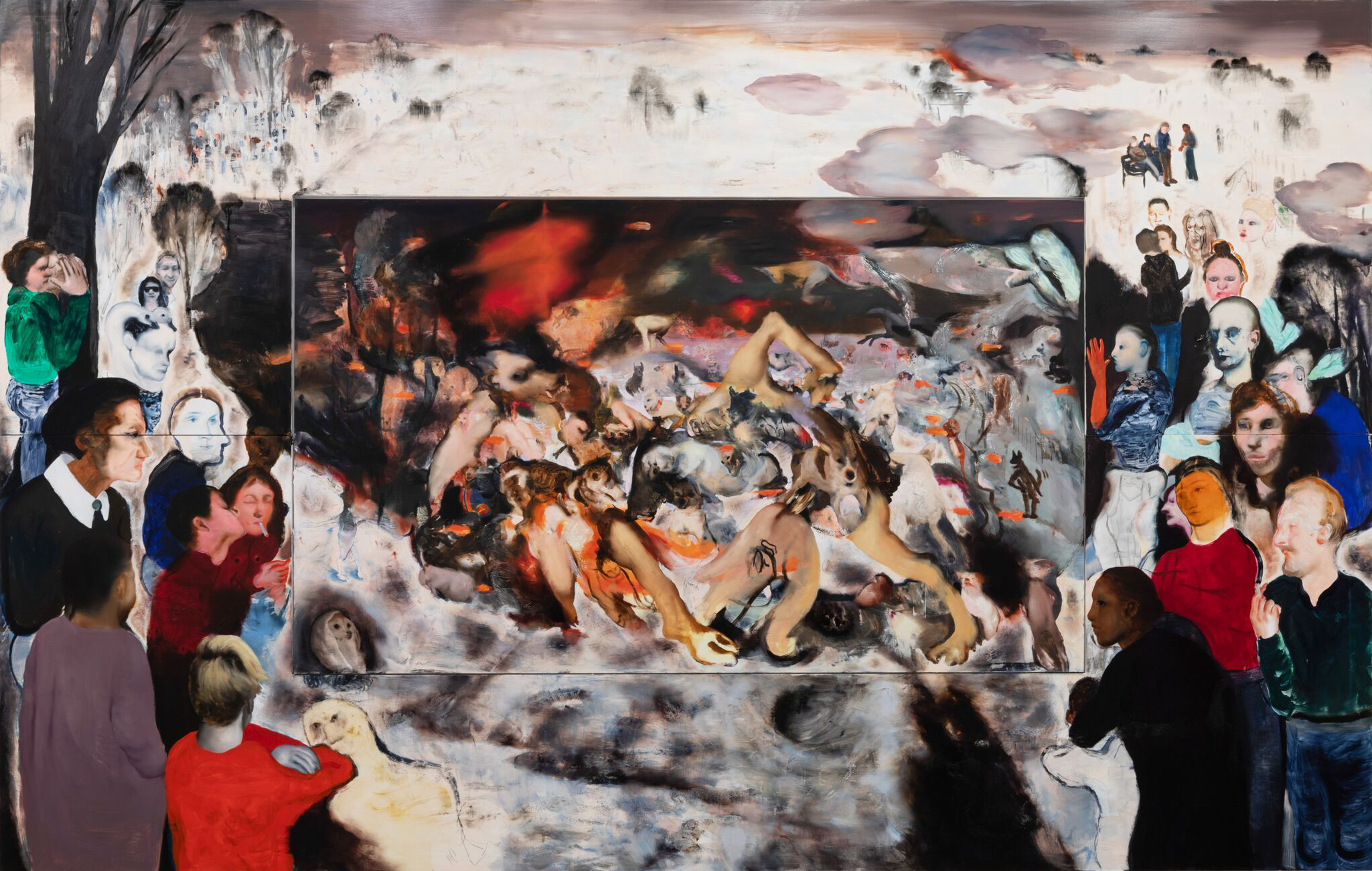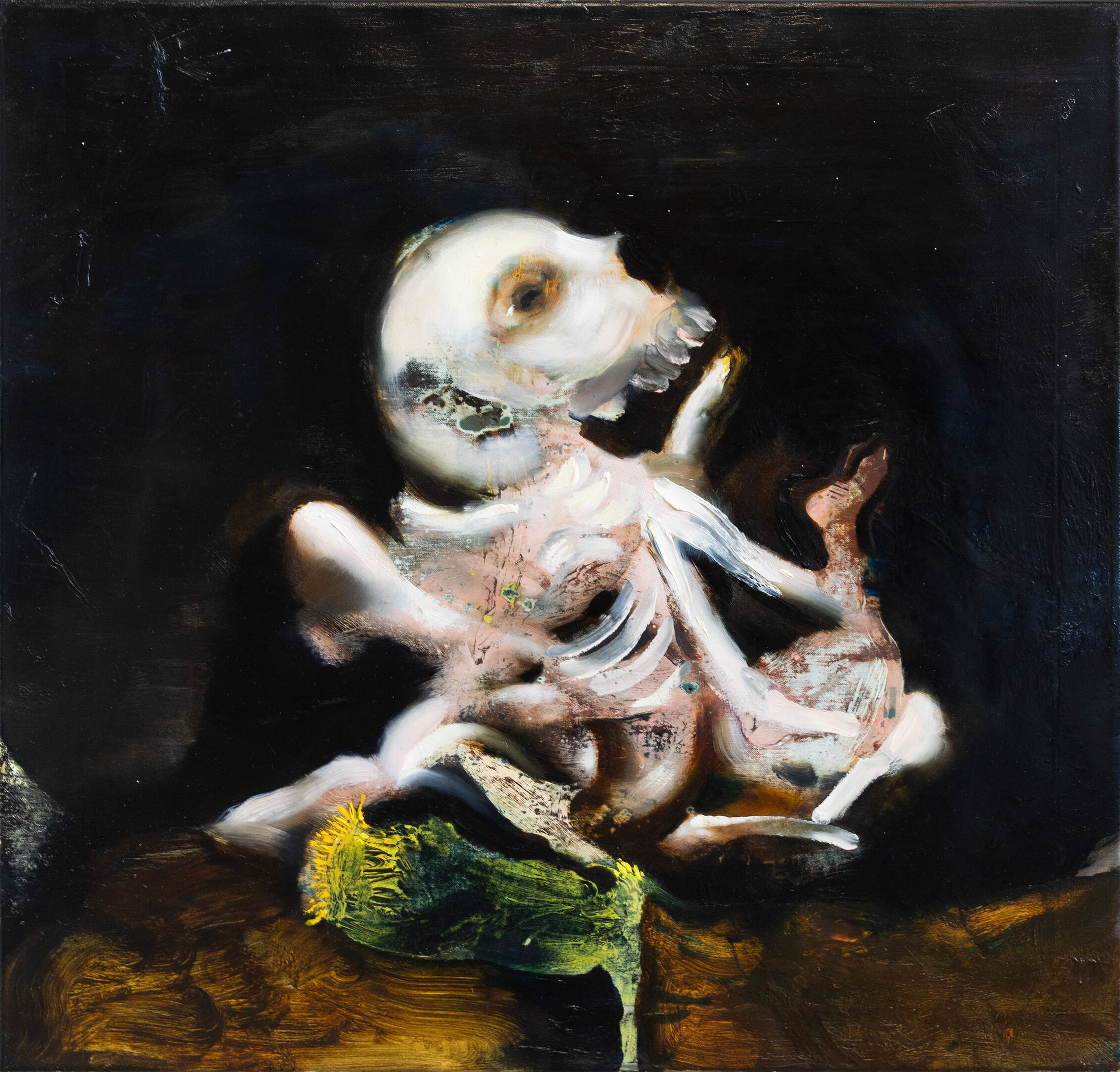
Ambera Wellmann

Ambera Wellmann was born in 1982 in the port town of Lunenberg, Nova Scotia. She received her undergraduate degree from the Nova Scotia College of Art and Design in Halifax and studied at Cooper Union in New York. In 2016, while pursuing a master’s degree at the University of Guelph in Ontario, she received the Joseph Plaskett Award in Painting, which allowed her to live and work in Berlin.
In 2017, Wellmann won the prestigious RBC Canadian Painting Competition for work that explored many of the themes and methods she continues to pursue today in paintings constructed from numerous layers of intricately worked wet oils, often depicting nebulous human and animal forms, sometimes in extremis or entwined in states of ecstasy, figurative in only a tenuous sense. 'I am often just looking for an arrangement with the bodies that actually feels impossible,’ Wellmann says, 'in order to create a diagram for what kind of infinite possibilities the body can have.’
Wellmann’s work accrues through what she has described as a visual version of catachresis, the process in which a word is deliberately deployed incorrectly; her ‘painterly catachresis’ manifests through irrational pictorial space and the depiction of an indeterminate number of bodies, genders, species, all without any predetermined visual hierarchy. Wellmann’s art thus occurs at the frontier where the known meets the uncanny, ‘the moment in which things become impossible, either figuratively or spatially, but which still register in a way that makes formal sense,’ she explains. ‘This uncertainty is a form of intimacy (something unrecognizable is, oddly, the place in which we can recognize ourselves the most).’
While living in Berlin, Wellmann became more deeply engaged in art history. The influence of Goya, Bosch, Bruegel, Courbet, and Ingres, as well as Italian Renaissance and Netherlandish and Spanish Baroque masters, emerged more palpably in her paintings through an increasingly deft command of illusory space and form. In addition to historical precedents, Wellmann draws from sources as diverse as pornographic photography and video, screenshots from Instagram and other digital sources, and observational drawings she made on the streets or in the subway.
Following her time in Berlin, Wellmann lived and worked in Mexico City. Pronounced floral imagery of her earlier paintings gave way to darker tableaux in which, as she has described it, 'humans become animalized and animals humanized.’ A more ominous atmosphere evolved in her canvases, with movement taking place against spectral, foreboding plains that echo El Greco, de Chirico, and Tanguy. In some paintings, skeletal forms began to appear as central figures. Erasure, often accomplished with the use of an electric sander, became more integral to Wellmann’s finished work during this time. For her, erasure is a process through which to slow the viewer’s eye and 'involve them in the time of the painting and its making.’ It permits her to create uncertain space-time coordinates and render realms where past and present, human and animal bodies, undergo transmutation. By thus embracing chance, error, and revision, she exposes the processes of metamorphosis, positing the vulnerability of the individual as the path to collectivity.
In 2021, Wellmann’s tour de force work ‘Strobe‘ debuted as a centerpiece of the New Museum’s Triennial exhibition 'Soft Water Hard Stone’, curated by Margot Norton and Jamillah James. At thirty feet wide, this vast canvas depicts a landscape strewn with forms that suggest windblown limbs, clouds, detritus, and elongated figures of radically different sizes, as well as frolicking dogs and miniature girls smoking cigarettes, all anchored by a top-down view of a faucet-less sink, its gleam referencing a trope Wellmann employed in earlier work by creating trompe l’oeil reflections of light on porcelain. Of the painting, she says, 'you have to experience it in fragments, so it never reaches any kind of resolution.’
With ‘Strobe’, Wellmann established a new benchmark in her practice, collapsing and reconfiguring ground that is neither liquid nor solid, and light that is neither dawn nor dusk, to assert a vision of the future.
In April 2023, Wellmann’s exhibition 'Antipoem’ opened at the Fondazione Sandretto Re Rebaudengo, in Turin. Her new works on view took as a point of origin Anne Carson’s 2002 translations of ‘Sappho, If Not Winter’, a book that became a preoccupation of Wellman’s chiefly because of the incomplete, highly scattered nature of Sappho’s surviving verse. 'The absence of language becomes a space that the reader or the viewer can imagine and insert themselves into and occupy that space more intimately,’ Wellmann says, adding: 'That becomes a fruitful space from which to make paintings.’ Among the new ‘Antipoem’ paintings were a series of large-scale works that explored themes of fear, power and formlessness through a critical confrontation with the art historical motif of the Minotaur. Set amid nocturnal landscapes, Wellmann’s figures obscured and dissolved in their environments, where darkness functioned as both a metaphor for vulnerability and a limitless queered atmosphere in which the boundaries of the body could disappear.
In describing her work, noted curator and critic Nicolas Bourriaud has said that Wellmann ‘does not represent bodies, but the circumstances of their disappearance into the fluidity of the world,’ positing that her artistic endeavor ‘poses a crucial question: how is energy distributed? And how can art make this atlas of energies visible, tangible, usable by each and every one of us?”
Wellmann’s work has been exhibited at numerous museums and foundations internationally, including Fondazione Sandretto Re Rebaudengo, Turin (2023); Stavanger Art Museum, Norway (2023); ICA Boston, Boston (2022); Palazzo Bollani, Venice (2022); the New Museum, New York (2021); Staatsgalerie Stuttgart, Germany (2021); MAC Belfast, UK (2021); Pond Society, Shanghai (2021); The Columbus Museum of Art, Columbus, OH (2021); MoCO, Montpellier (2019); MoMA Warsaw, Poland (2019); Australian Center for Contemporary Art, Melbourne (2019); and Palais de Tokyo, Paris (2019).
Her work resides in the permanent collections of the National Gallery of Canada, Ontario; Museum of Fine Arts, Boston; Kistefos Museum, Jevnaker; Fondazione Sandretto Re Rebaudengo, Turin; the Philara Collection, Dusseldorf; the Aïshti Foundation, Beirut; The Columbus Museum of Art, Columbus; ICA Miami, Miami; Mudam Luxembourg in Luxembourg; and the X Museum, Beijing.
Biography
Solo Exhibitions
Group Exhibitions
Awards & Grants
Public Collections
Lectures & Talks
Bibliography
Monographs
Publications
Selected Press









